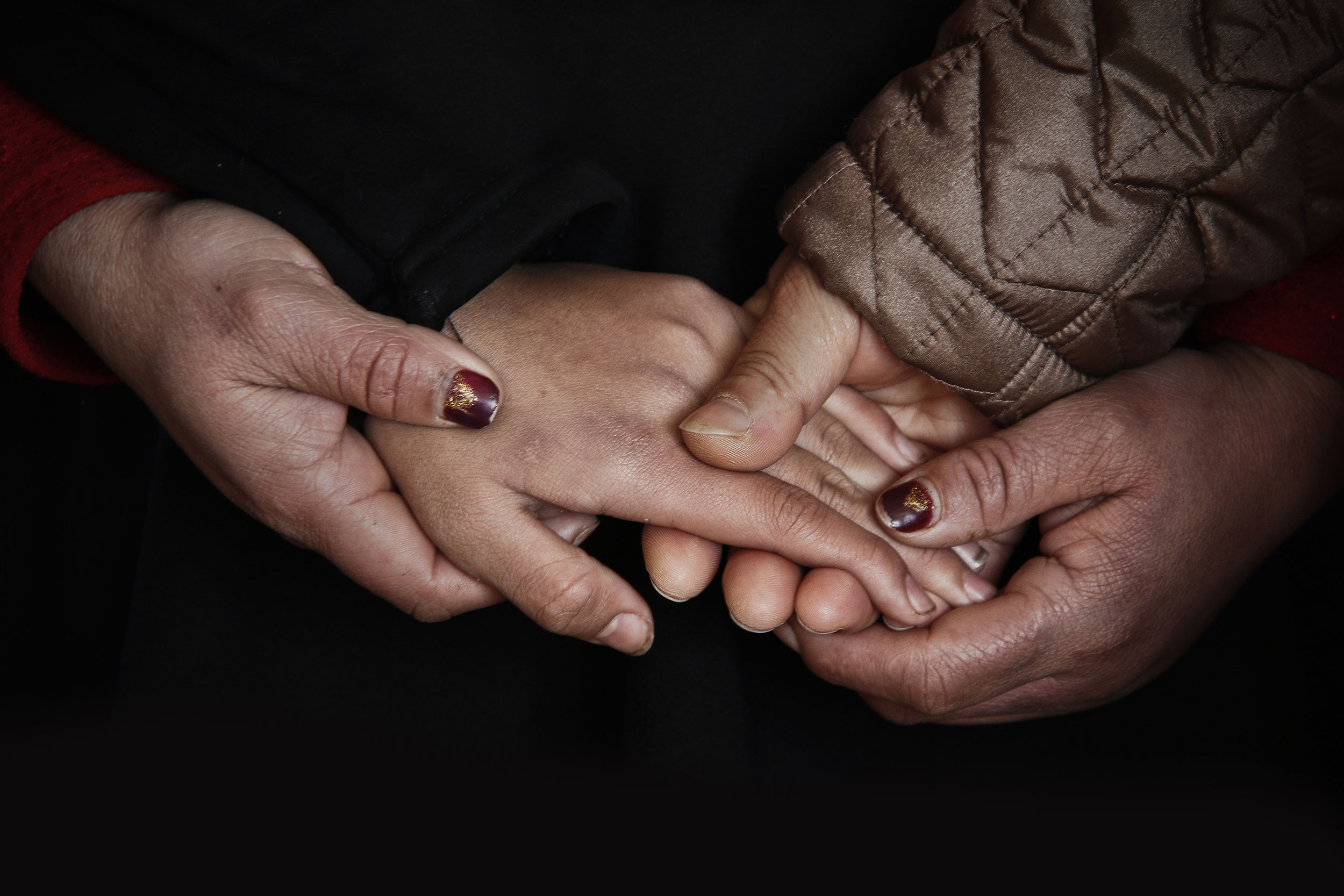
If you have a friend or family member who is severely depressed, then this is your worst nightmare: getting the phone call or the dreaded knock at the door, and someone has just informed you that your loved one has taken their own life.
In the blink of an eye, your life has been irrevocably changed. You want find out how your loved one died, but you know that they died by suicide. Like the last note played in an unfinished symphony, suicide leaves you wondering what you could have done and who your loved one could have been.
In grieving process after such loss, you might believe a friend’s or loved one’s suicide is your fault. These thoughts leave you with a guilt that quietly gnaws around the edges of your daily life. You might ask yourself, “why didn’t I see the signs?” Or even worse, “If I had only done something sooner, they might still be alive.”
Despondent and flattened by grief, you ruminate, chastise yourself, and ponder a life half-lived. Unfortunately, like with all grief, no amount of contemplation or bargaining will bring a loved one back. However, one of the most meaningful acts you can do is to focus your efforts on suicide prevention.
Talking frankly about suicide is not a topic that wends its way into polite conversation. However, I feel it is my personal duty to talk about suicide prevention because my son recently had two different plans to commit suicide. Like many suicidal people, he had tried to conceal these plans from me.
Thankfully, I knew the signs and took action. My son is recovering from depression and doing better each day.
I want you to know how to see the signs and know how to respond effectively. If you have a child, loved one, or even a friend who is depressed and/or suicidal, I want to give you the tools to help them. After all, suicide thrives in the shadows of unspoken thoughts, concealed contemplations, and shameful feelings. Despite the discomfort, it is time to discuss suicide openly so that we can help save lives.
The AHA Moment
I have created one simple acronym that you can use to when facing a crisis: AHA, which stands for Awareness, Hope, and Action. This acronym can help you stay focused during a emergency, and it outlines three concrete steps you can take if someone is suicidal. Let’s take a closer look at how this works.
Awareness
The most important thing you can do is to be aware when someone may be feeling suicidal, especially because they likely won’t share that they are experiencing suicidal thoughts or that they have a plan. You should look for clues, especially if they show signs of clinical depression.
We also must be aware of how depression affects one of our most vulnerable populations: children and adolescents. You may have noticed more stories of adolescent suicides in the news. In fact, suicide rates have dramatically increased in children and adolescents: 15 to 19 year old adolescent suicide rates have doubled between the 1960s and 1990s, and even tripled in the 10 to 14 year age group.
If you have a child or grandchild in these age groups, keep your eyes and ears open, especially since suicide is the third leading cause of death in adolescents.
It is also essential to be aware of what a potentially suicidal person is thinking or saying, even on social media. Personally, I have heard the following statements from people who were suicidal:
- I wonder what it would be like not to exist any longer
- I don’t think anyone would care if I suddenly disappeared
- I don’t think there is any reason to being here any longer
- People would get along fine with without me
- Death isn’t so bad
- I would be better off dead
- There is nothing good to be found in life
- No one really cares about me; they are all just pretending
If someone you know says things like these or posts statements like this on social media, I urge you to believe them. Most of the time, such statements are neither empty threats nor attempts at seeking attention. They are usually indicative of a much more painful line of thought that a suicidal person is experiencing, but they may be too ashamed or fearful to admit that they are having those thoughts.
Being aware of the signs, symptoms, and the way people dealing with depression communicate is important to detecting possible signs of suicidal thoughts or planning.
Hope
Clinical depression can prevent people from opening up. So, when your intuition tells you something is wrong with a friend or a loved one, you need to keep asking. If you notice changes in their behavior, say so. Ask if you can help, or offer to be a safe, non-judgmental person to talk to if they need.
If you believe a someone is suicidal, you need to open the conversation to instill hope until help arrives. Even though it feels taboo, talking about suicide is vitally important to helping people feel that they can safely admit to having suicidal thoughts or plans without feeling stigmatized or judged. Once they admit what they’re feeling and thinking, then you can step in and help in the appropriate way. Many suicidal people may have doubts about following through with their plans, and they desperately need a lifeline to keep them on the planet.
If a person admits that they are experiencing suicidal ideation, then you should offer an expression of solidarity and of hope. Remind them that you are there to support them and that you value them, and that their life has value and has a future. Remind them that there are others who love them dearly and want to see them overcome their difficulties and live a good life.
But, most importantly, when someone admits to suicidal planning, you have to immediately spring into action. Many people can have fleeting or even recurring thoughts of suicide but that doesn’t necessarily make them at immediate risk. However, if someone has made a plan, then they absolutely need immediate clinical attention.
Action
While the initial shock of learning that someone you care for is suicidal can be jarring and frightening, taking action can be the hardest part but it is the most important. They may know that they need help, but sometimes they don’t want help. They might feel ashamed and the idea of getting help might reinforce negative thoughts they have about themselves, like feeling useless or defective.
Even if they claim that they do not need assistance, you have an obligation to help because they are at risk of harming themselves. One of the key differences is that if someone has suicidal thoughts but does not have a plan, then they should get professional help as soon as possible through a therapist or psychiatrist. However, if someone has a plan, then they are at much greater risk and need immediate help, even if that means dialing 911 or bringing them to the emergency room.
Here are some guidelines on how to help someone who has suicidal thoughts but doesn’t have a plan and isn’t necessarily at immediate risk:
- Provide them with a suicide hotline number, tell them that they can call you for help 24/7, ask them to promise that they won’t hurt themselves, and help them make an appointment with a therapist and psychiatrist.
- Remove all harmful objects from their home, including knives and other sharp objects, weapons and firearms, rope, and medications, both prescription and over the counter. Remove dangerous household cleaners or other substances that could be harmful.
Another important and effective course of action is to develop a safety plan that includes specific steps they must take to prevent self-harm, things they can do to calm or distract themselves from suicidal thoughts, the number of a suicide crisis line, and the numbers of people who can serve as 24/7 emergency contacts. It is best to write this plan down, and even to sign it like a contract.
When you make this safety plan, a key component is to make a promise that they will contact you, one of their emergency contacts, or an emergency room if they feel unsafe and have thoughts of harming themselves. Similarly, you can promise that you are there to help them at any time and for any reason. Shake their hand, look them in the eye, and ask them to promise to stick to the safety plan no matter what happens.
However, if someone tells you that they have a plan to kill themselves, follow these guidelines:
- Call 911 or take them to an emergency room, which is the safest place they can be. If they are acting in a threatening way or have a weapon in their possession, call the police.
- If you feel safe in their presence, stay with them until help arrives. Make sure that they do not have access to any sharp objects, weapons, medications, or other items that could be harmful.
If you cannot take these steps on your own, please enlist the help of other family members, friends, and professionals, or dial 911.
Even though helping a suicidal loved one can be frightening, taking action is necessary. Most suicides are preventable if we recognize the warning signs and talk to them about getting help before they follow through with their plans. My son is alive today because I was able to recognize the signs and act. If you follow these guidelines, you could help someone step back from the proverbial ledge and save their own life.
National Suicide Prevention Lifeline
We can all help prevent suicide. The National Suicide Prevention Lifeline provides 24/7, free, and confidential support for people in distress, prevention and crisis resources for you or your loved ones, and best practices for professionals. If you or a loved one are at risk, dial 1-800-273-TALK (8255). The service is available to everyone. The deaf and hard of hearing can contact the Lifeline via TTY at 1-800-799-4889. All calls are confidential. Contact social media outlets directly if you are concerned about a friend’s social media updates or dial 911 in an emergency.

